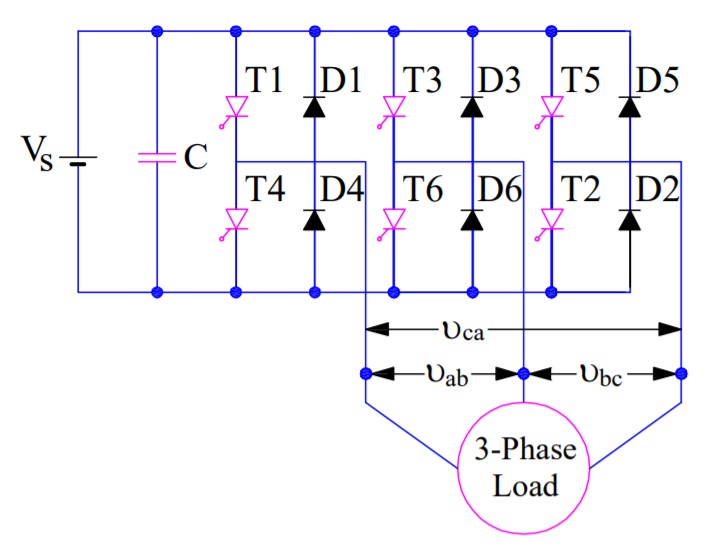synchro
Senior Member
- Location
- Chicago, IL
- Occupation
- EE
But as I understand it, there is still a difference in behavior between a 3 phase inverter and 3 AC-coupled single phase inverters. In that in the 3 phase inverter the single phase subunits would share a common DC bus, so they'd each use 1/3 of the available power to jointly create a balanced output. While the 3 separate single phase inverters would have separate DC inputs and may not be able to jointly create a balanced output.
Agree.
Also, a single-phase inverter's instantaneous AC output current (and therefore also the currents drawn by the output transistors from the DC bus) will be small near the zero crossings of the grid voltage waveform. And so the capacitors on the DC side will have to be large enough to prevent this significant variation in current draw from causing excessive ripple on the DC bus voltage, which could then produce distortion of the current waveform or other problems.
On a 3-phase inverter, the lowest instantaneous current draw by the output transistors from the DC bus will be √3/2 ≈ 0.866 of the peak current draw. This smaller variation in the current draw will reduce the amount of DC bus ripple voltage and/or capacitor size compared to a single phase implementation.
A simplified schematic with a 3-phase PV inverter:





